|
Your search criteria found 1199 images Target is Jupiter (and available satellites) |
| My List |
Addition Date |
Target
|
Mission | Instrument | Size |

|
1998-07-15 | Ganymede |
Galileo |
Solid-State Imaging |
800x798x1 |
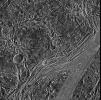
|
|||||

|
1998-07-15 | Ganymede |
Galileo |
Solid-State Imaging |
531x361x1 |

|
|||||

|
1998-07-15 | Ganymede |
Galileo |
Solid-State Imaging |
949x559x1 |

|
|||||

|
1998-07-15 | Ganymede |
Galileo |
Solid-State Imaging |
506x360x1 |

|
|||||

|
1998-07-15 | Ganymede |
Galileo |
Solid-State Imaging |
797x798x1 |

|
|||||

|
1998-07-15 | Ganymede |
Galileo |
Solid-State Imaging |
706x551x1 |

|
|||||

|
1998-07-15 | Ganymede |
Galileo |
Solid-State Imaging |
782x784x1 |

|
|||||

|
1998-07-15 | Ganymede |
Galileo |
Solid-State Imaging |
900x600x1 |

|
|||||

|
1999-10-07 | Ganymede |
Galileo |
Solid-State Imaging |
590x900x1 |

|
|||||

|
1999-10-07 | Ganymede |
Galileo |
Solid-State Imaging |
1078x900x1 |

|
|||||

|
1999-10-07 | Ganymede |
Galileo |
Solid-State Imaging |
610x900x1 |

|
|||||

|
1999-01-18 | Ganymede |
Galileo |
Solid-State Imaging |
687x687x3 |

|
|||||

|
1999-06-16 | Ganymede |
Voyager |
VG ISS - Narrow Angle |
800x800x3 |

|
|||||

|
1999-07-23 | Ganymede |
Voyager |
VG ISS - Narrow Angle |
100x100x3 |

|
|||||

|
2000-01-04 | Ganymede |
Voyager |
VG ISS - Narrow Angle |
795x795x1 |

|
|||||

|
2000-03-23 | Ganymede |
Voyager |
VG ISS - Narrow Angle |
794x794x1 |
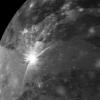
|
|||||

|
2000-05-25 | Ganymede |
Voyager |
VG ISS - Narrow Angle |
796x796x1 |

|
|||||

|
2000-05-25 | Ganymede |
Voyager |
VG ISS - Narrow Angle |
796x796x1 |

|
|||||

|
2000-05-25 | Ganymede |
Voyager |
VG ISS - Narrow Angle |
1594x797x1 |

|
|||||

|
2000-05-25 | Ganymede |
Voyager |
VG ISS - Narrow Angle |
786x1722x1 |
|
|
|||||

|
2000-05-25 | Ganymede |
Voyager |
VG ISS - Narrow Angle |
796x799x1 |
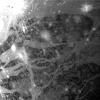
|
|||||

|
2000-12-16 | Ganymede |
Galileo |
Solid-State Imaging |
2000x2300x1 |

|
|||||

|
2000-12-16 | Ganymede |
Galileo |
Solid-State Imaging |
2603x756x1 |

|
|||||

|
2000-12-16 | Ganymede |
Galileo |
Solid-State Imaging |
1249x1939x1 |

|
|||||

|
2000-12-16 | Ganymede |
Galileo |
Solid-State Imaging |
1026x1748x1 |

|
|||||

|
2000-12-16 | Ganymede |
Galileo |
Solid-State Imaging |
2514x1929x1 |

|
|||||

|
2000-12-16 | Ganymede |
Galileo |
Solid-State Imaging |
1000x751x1 |

|
|||||

|
2000-12-16 | Ganymede |
Galileo |
Solid-State Imaging |
1764x809x1 |

|
|||||

|
2000-12-16 | Ganymede |
Galileo |
Solid-State Imaging |
1228x512x3 |

|
|||||

|
2000-12-16 | Ganymede |
Galileo |
Solid-State Imaging |
1358x1098x3 |

|
|||||

|
2000-12-16 | Ganymede |
Galileo |
Solid-State Imaging |
3777x2760x1 |

|
|||||

|
2000-12-16 | Ganymede |
Galileo |
Solid-State Imaging |
3328x2330x1 |

|
|||||

|
2000-12-16 | Ganymede |
Galileo |
Solid-State Imaging |
795x767x1 |

|
|||||

|
2000-12-17 | Ganymede |
Galileo |
Solid-State Imaging |
512x384x1 |

|
|
||||

|
2001-03-13 | Ganymede |
Galileo |
Solid-State Imaging |
1078x636x3 |

|
|||||

|
2001-03-13 | Ganymede |
Galileo |
Solid-State Imaging |
328x450x3 |

|
|||||

|
2001-03-13 | Ganymede |
Galileo |
Solid-State Imaging |
404x294x1 |

|
|||||

|
2001-03-13 | Ganymede |
Galileo |
Solid-State Imaging |
542x425x1 |

|
|||||

|
2001-03-13 | Ganymede |
Galileo |
Solid-State Imaging |
1089x842x1 |

|
|||||

|
2002-05-10 | Ganymede |
Galileo Voyager |
VG Imaging Science Subsystem VG Imaging Science Subsystem - Narrow Angle |
8817x4382x3 |

|
|||||

|
2004-08-13 | Ganymede |
Galileo |
Solid-State Imaging |
720x540x3 |

|
|||||

|
2007-04-02 | Ganymede |
New Horizons |
LORRI |
380x380x1 |

|
|||||

|
2007-05-01 | Ganymede |
New Horizons |
LEISA LORRI |
814x343x3 |

|
|||||

|
2014-02-12 | Ganymede |
Galileo Voyager |
1800x956x3 | |

|
|||||

|
2014-02-12 | Ganymede |
Galileo Voyager |
797x754x3 | |

|
|||||

|
2014-05-01 | Ganymede | 3300x2550x3 | ||
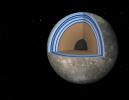
|
|||||

|
2020-07-22 | Ganymede |
Juno |
JIRAM |
1151x1160x3 |

|
|||||

|
2020-07-22 | Ganymede |
Juno |
JIRAM |
2738x592x3 |

|
|||||

|
2021-06-08 | Ganymede |
Juno |
JunoCam |
1625x2524x1 |

|
|||||

|
2021-06-08 | Ganymede |
Juno |
Stellar Reference Unit (SRU) |
512x512x1 |

|
|||||

|
2021-08-05 | Ganymede |
Juno |
JIRAM |
8000x8000x3 |

|
|||||

|
2021-08-05 | Ganymede |
Juno |
JIRAM |
4724x4724x3 |

|
|||||

|
2022-12-14 | Ganymede |
Juno |
Jovian Auroral Distributions Experiment (JADE) |
1920x1080x3 |

|
|||||

|
2022-12-14 | Ganymede |
Juno |
JunoCam |
3584x2240x3 |

|
|||||

|
2023-10-30 | Ganymede |
Juno |
JIRAM |
6385x3119x3 |

|
|||||

|
2001-01-31 | Himalia |
Cassini-Huygens |
Imaging Science Subsystem |
735x540x3 |

|
|||||

|
1996-06-03 | Io |
Voyager |
684x803x3 | |

|
|||||

|
1996-01-29 | Io |
Voyager |
1160x1160x3 | |

|
|||||

|
1999-08-31 | Io |
Voyager |
582x720x3 | |

|
|||||

|
1996-01-29 | Io |
Voyager |
VG ISS - Narrow Angle |
1000x1000x3 |
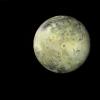
|
|||||

|
1997-09-07 | Io |
Galileo |
Solid-State Imaging |
2340x1475x3 |

|
|||||

|
1997-09-08 | Io |
Galileo |
Solid-State Imaging |
700x800x3 |

|
|||||

|
1997-09-08 | Io |
Galileo |
Solid-State Imaging |
2600x1150x3 |

|
|||||

|
1997-09-10 | Io |
Galileo |
Solid-State Imaging |
1775x1300x3 |

|
|||||

|
1998-06-04 | Io |
Voyager |
2572x1286x3 | |

|
|||||

|
1998-06-04 | Io |
Voyager |
2468x1051x3 | |

|
|||||

|
1998-06-04 | Io |
Voyager |
Imaging Science Subsystem |
1520x1400x3 |

|
|||||

|
1998-06-04 | Io |
Voyager |
1240x1229x3 | |

|
|||||

|
1998-06-04 | Io |
Voyager |
2625x1840x3 | |

|
|||||

|
1998-06-04 | Io |
Voyager |
Imaging Science Subsystem |
1100x1292x3 |

|
|||||

|
1998-06-04 | Io |
Voyager |
Imaging Science Subsystem |
2175x2810x3 |

|
|||||

|
1998-06-04 | Io |
Voyager |
718x800x3 | |

|
|||||

|
1999-08-31 | Io |
Voyager |
VG ISS - Narrow Angle |
619x721x3 |

|
|||||

|
1996-11-16 | Io |
Voyager |
VG ISS - Narrow Angle |
325x400x1 |

|
|||||

|
1996-11-16 | Io |
Voyager |
VG ISS - Narrow Angle |
220x300x1 |

|
|||||

|
1996-11-16 | Io |
Voyager |
VG ISS - Narrow Angle |
800x795x1 |

|
|||||

|
1997-01-09 | Io |
Voyager |
VG ISS - Narrow Angle |
680x500x1 |

|
|||||

|
1997-01-09 | Io |
Voyager |
VG ISS - Narrow Angle |
140x140x1 |

|
|||||

|
1998-06-08 | Io |
Voyager |
VG ISS - Narrow Angle |
1150x1430x3 |

|
|||||

|
1997-09-07 | Io |
Galileo |
Solid-State Imaging |
2000x2000x3 |

|
|||||

|
1997-11-18 | Io |
Galileo |
Solid-State Imaging |
798x787x3 |

|
|||||

|
1997-11-18 | Io |
Galileo |
Solid-State Imaging |
1215x729x3 |

|
|||||

|
1998-03-26 | Io |
Galileo |
Near Infrared Mapping Spectrometer |
1900x1300x3 |

|
|||||

|
1997-12-18 | Io |
Galileo |
Solid-State Imaging |
800x800x1 |

|
|||||

|
1997-12-18 | Io |
Galileo |
Solid-State Imaging |
493x493x1 |

|
|||||

|
1997-12-18 | Io |
Galileo |
Solid-State Imaging |
1817x1817x3 |
![Io, the most volcanic body in the solar system is seen in the highest resolution obtained to date [Sept.7 & Nov. 6, 1996] by NASA's Galileo spacecraft.](/thumb/PIA00583.jpg)
|
|||||

|
1998-03-06 | Io |
Galileo |
Solid-State Imaging |
980x655x3 |

|
|||||

|
1997-11-18 | Io |
Galileo |
Solid-State Imaging |
2284x727x3 |

|
|||||

|
1997-12-18 | Io |
Galileo |
Solid-State Imaging |
390x197x3 |

|
|||||

|
1997-12-18 | Io |
Galileo |
Solid-State Imaging |
388x394x3 |

|
|||||

|
1998-03-26 | Io |
Galileo |
Solid-State Imaging |
1000x800x3 |

|
|||||

|
1997-09-07 | Io |
Galileo |
Solid-State Imaging |
2010x1640x3 |

|
|||||

|
1997-09-07 | Io |
Galileo |
Solid-State Imaging |
1890x1780x3 |

|
|||||

|
1997-09-07 | Io |
Galileo |
Solid-State Imaging |
1640x1650x3 |

|
|||||

|
1997-09-07 | Io |
Galileo |
Solid-State Imaging |
1840x1900x3 |

|
|||||

|
1997-09-07 | Io |
Galileo |
Solid-State Imaging |
1620x1330x3 |

|
|||||

|
1997-09-07 | Io |
Galileo |
Solid-State Imaging |
230x300x3 |

|
|||||

|
1997-09-07 | Io |
Galileo |
Solid-State Imaging |
2400x1900x3 |

|
|||||

|
1997-09-07 | Io |
Galileo |
Solid-State Imaging |
715x287x3 |

|
|||||

|
1997-09-07 | Io |
Galileo |
Solid-State Imaging |
820x710x3 |

|
|||||

|
 |
 |
 |
 |
 |
 |
 |
 |
 |
 |

|
| 1-100 | 101-200 | 201-300 | 301-400 | 401-500 | 501-600 | 601-700 | 701-800 | 801-900 | 901-1000 |
| Currently displaying images: 301 - 400 of 1199 |